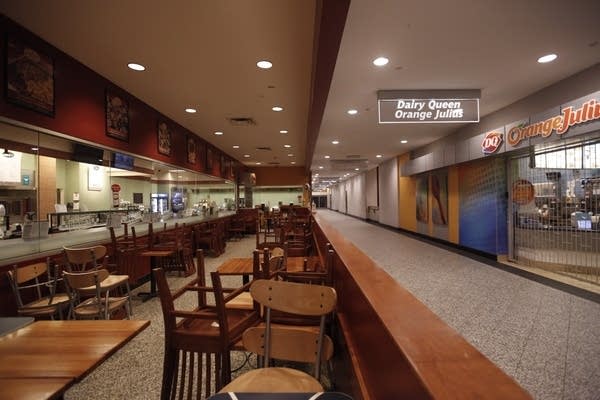It may be a while before your table’s ready

Go Deeper.
Create an account or log in to save stories.
Like this?
Thanks for liking this story! We have added it to a list of your favorite stories.
Before the COVID-19 pandemic took her job, Erikka Curran tended bar at Eli’s East in north Minneapolis. Eli’s shut down in mid-March, and since then Curran has been home, collecting unemployment.
She believes the dire predictions that the pandemic will take down many bars and restaurants for good.

“I worry about all kinds of people I know in the industry that own restaurants that are not going to make it through the other side,” she said. “I’m sure there are going to be a ton of places that close.”
Curran says it’s hard to imagine feeling safe again behind the bar. There's just so much contact with people in her line of work.
Turn Up Your Support
MPR News helps you turn down the noise and build shared understanding. Turn up your support for this public resource and keep trusted journalism accessible to all.
“The number of glasses you touch. The number of plates you touch,” she said. “You’re engaging with people while they’re eating. People in restaurants get sick a lot as it is, just because of the sheer number of people you come in contact with.”
Still, she’s looking forward to opening day — even though she makes more money on unemployment than she did working.

Tony Erickson lost his job for the time being, too, at a popular northeast Minneapolis bar.
“I’m trying to survive by cooking a lot at home, which I always did before but now that I have more time, I’m honestly finding really great rice and beans recipes,” he said. “Not being able to go out has actually saved some money too.”
Erickson is not collecting unemployment, because he’s still working part-time at a brewery. Like Curran, he worries about the future of the hospitality industry. He thinks many people will hesitate to go out when they’re finally allowed to, and that would cut into his livelihood.
“Going forward, it might be a career change if it comes down to it,” Erickson said. One option he might like is to drive a delivery truck.

Not all restaurant and bar workers are sitting at home, unemployed. Chef Emily Swanson says she’s working about 50 hours a week preparing takeout meals at Hai Hai in northeast Minneapolis.
“We have these fried Brussels sprouts and they’re tossed with like a really intense fish sauce, Thai chili herb sauce,” she said. “Every time it comes out of the fryer and I put the sauce on, I’m like, ‘Wow, that smells really good!’ Every single time.”
Swanson said she’s glad the takeout operation at Hai Hai is going well, but she added it's strange to cook for an empty restaurant that used to be packed. The dining room is now a takeout staging area. The small size of the place, she said, will make it difficult to give customers a safe distance once they return. That will cost Hai Hai a lot of business.
“I can just only hope that the support is there to keep the places that people really love, and to have people really understand that restaurants aren’t free,” she said.
Out-of-work restaurant manager Carolyn Davis is apprehensive about going back to her job.

“Normal is a really hard thing to imagine,” she said. “Just even going out on excursions to get groceries, I’m a little unnerved when I’m out. And when I get home I’m very relieved. And so to think about putting in full-time days, being around people is a little … I’m nervous about it.”
Davis spent about two weeks shuttering the Roseville restaurant she manages, giving away perishable food and cleaning. Bringing a restaurant back online involves much more than unlocking the door, she said.
“You have to get all of your product in. You have to get people in to prep it and people in to cook it. It’s going to be an interesting logistical problem,” she said.
Davis cautioned that customers should expect an abbreviated menu — and shouldn’t be surprised if some of their favorite items aren’t on it.


